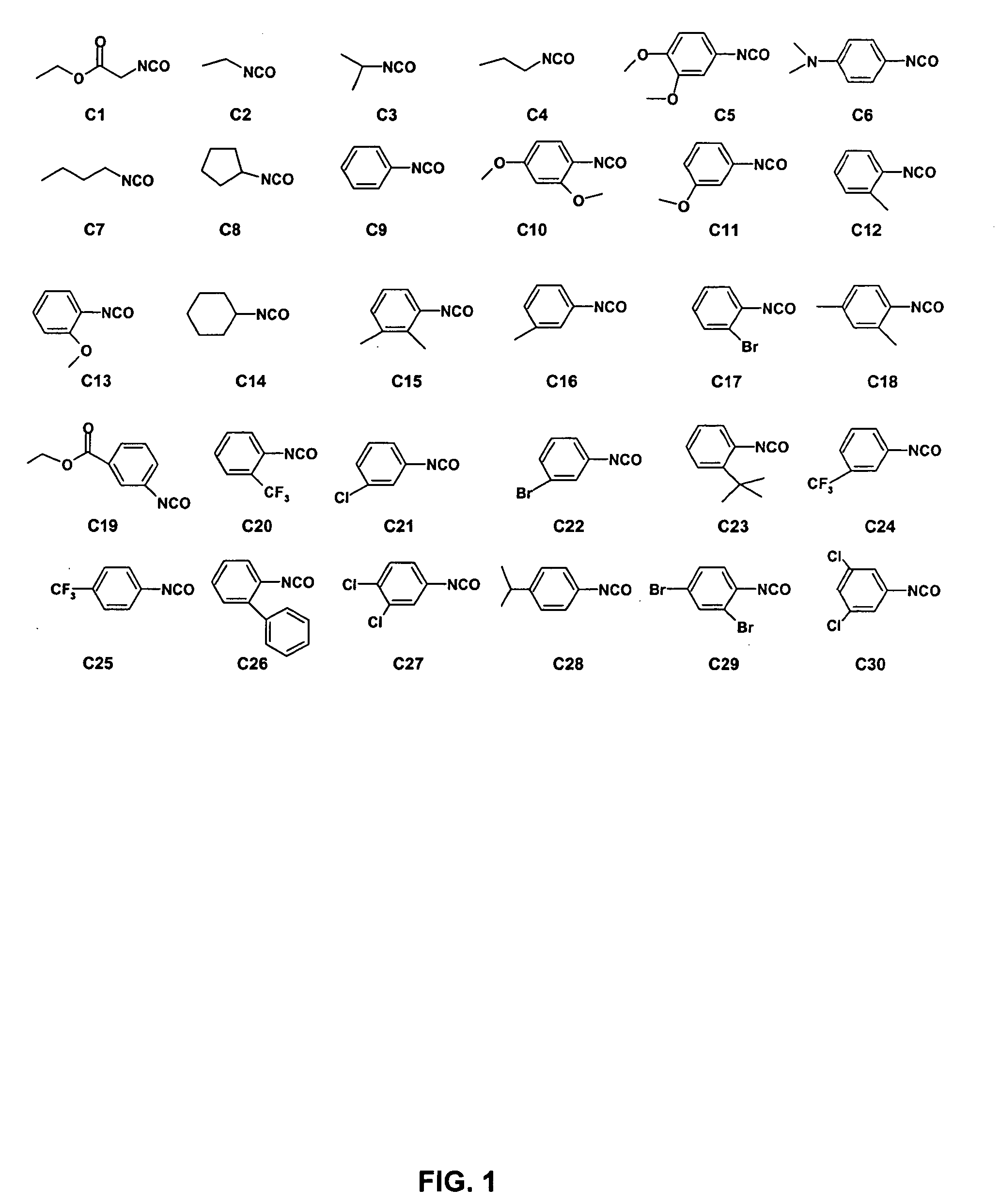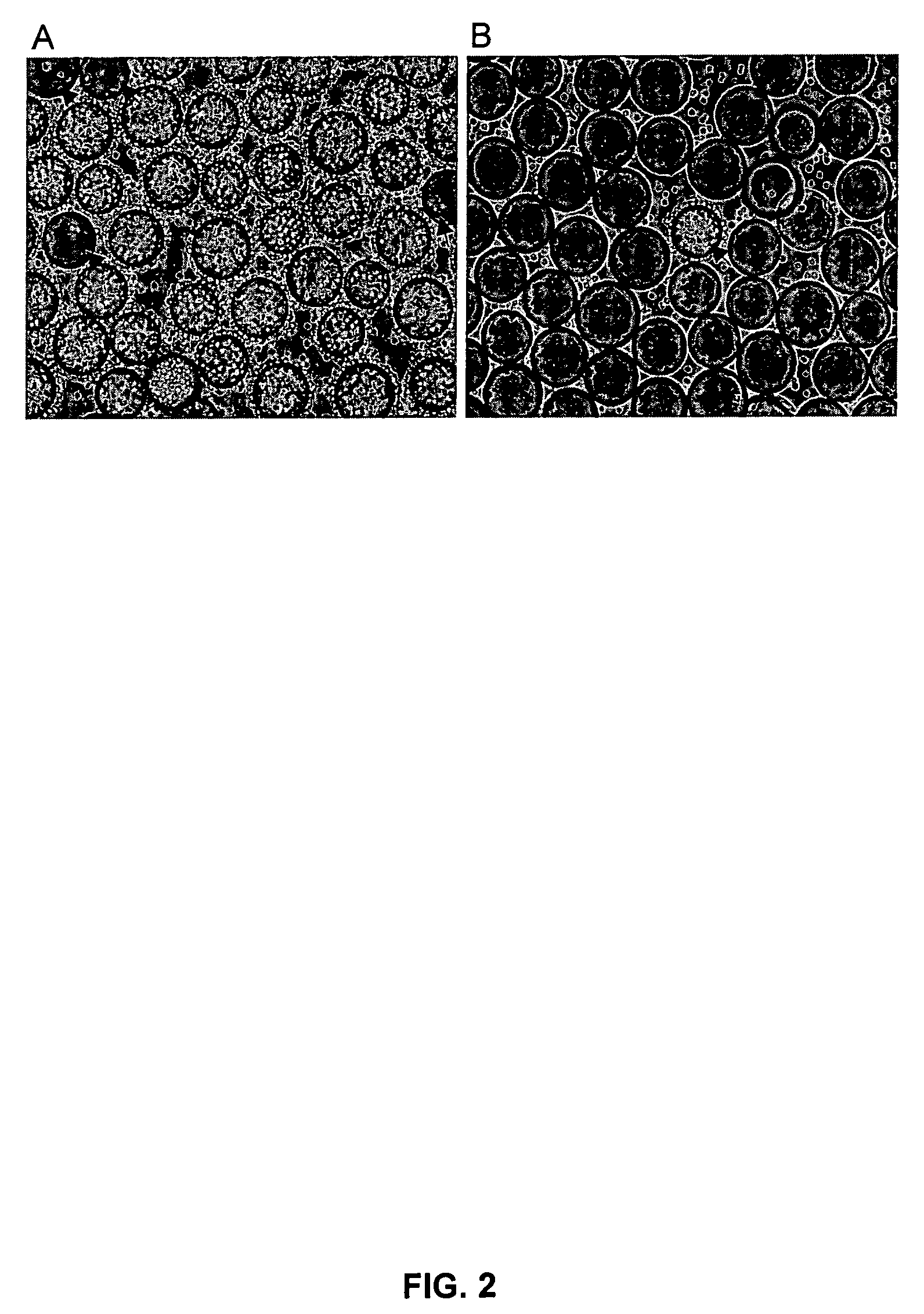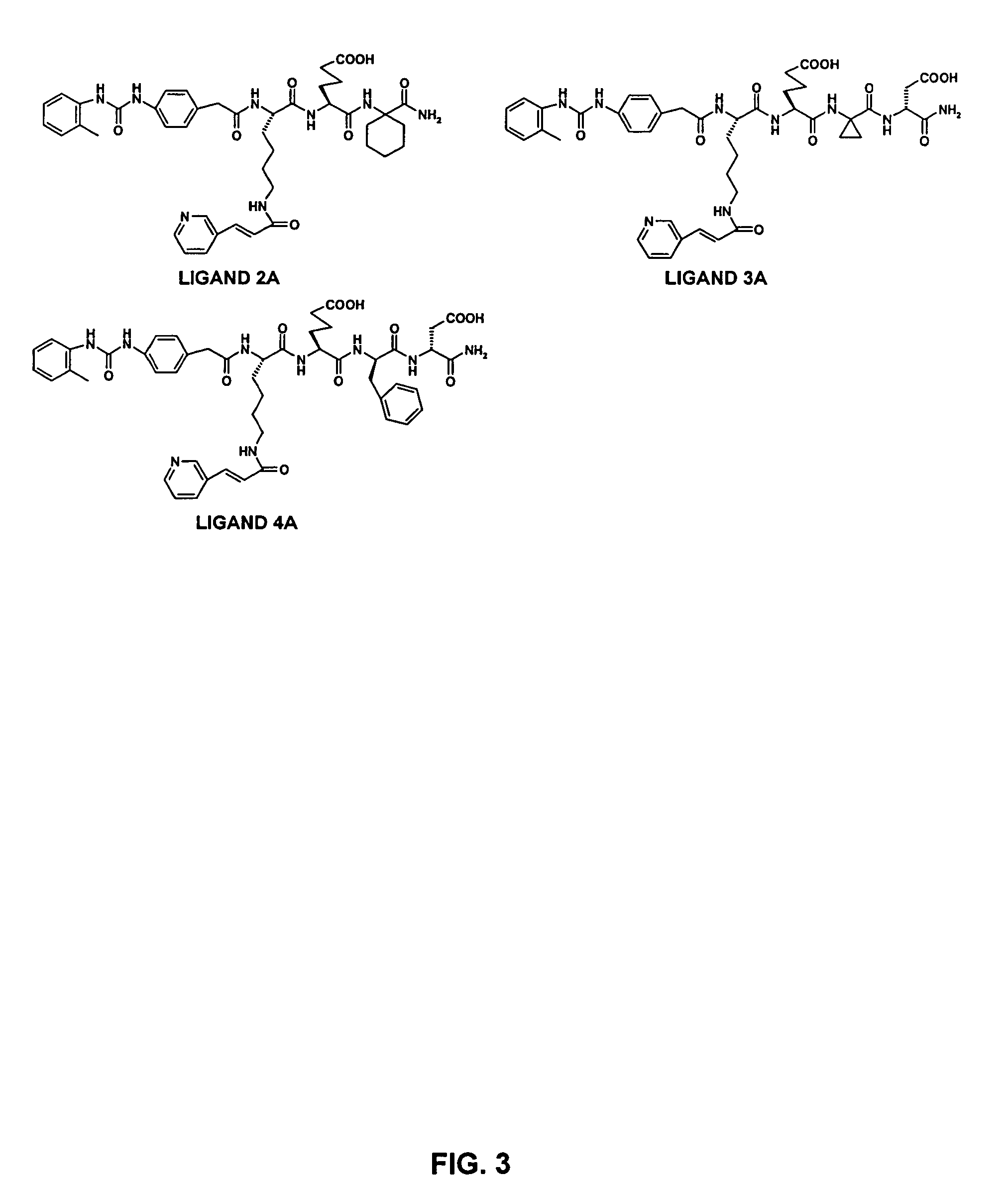Alpha-4 beta-1 integrin ligands for imaging and therapy
a technology of integrin and integrin inhibitor, applied in the field of imaging and therapy, can solve the problems of low relative efficacy/safety ratio, the significant disadvantage of 1 /sub>integrin inhibitors being susceptible to proteolysis by proteases, and the monoclonal antibody-based therapy. achieve the effect of high binding affinity, specificity and stability
- Summary
- Abstract
- Description
- Claims
- Application Information
AI Technical Summary
Benefits of technology
Problems solved by technology
Method used
Image
Examples
example 1
Synthesis of OBOC Combinatorial Libraries
[0182] All OBOC peptidomimetic libraries were synthesized on a TentaGel resin (Rapp Polymere, Tubingen, Germany) using a split / mix synthesis approach. The building blocks for library synthesis were either sequenceable amino acids (i.e., α-amino acids) or those encoded with sequenceable amino acids. The beads were made up of two layers, an outer layer (testing molecule) and an inner layer (coding tag). Orthogonal protecting groups such as Fmoc / Boc / Alloc / Dde were employed for amine group protection during library synthesis. Fmoc / t-But (9-fluorenylmethoxycarbonyl / tert-butyl) amino acid and HOBt / DIC (1-hydroxybenzotriazole / diisopropylcarbodiimide) coupling chemistry were used for library synthesis on TentaGel. Three equivalent Fmoc-amino acids were used. Fmoc deprotection was achieved by 20% piperidine in DMF (5 min, 15 min). Amino acid side-chain protecting groups were removed in the last step with a cocktail reagent mixture (82.5% TFA: 5% phen...
example 2
Ligands Identified from OBOC Combinatorial Library L-1
[0202] The first OBOC combinatorial peptidomimetic library (L-1) was synthesized by replacing the various substituents of BIO-1211 with small organic groups such as isocyanates, unnatural amino acids, and naturally-occurring amino acids. More particularly, the library contained compounds having the following structure:
A-B-X1-X2-X3-X4-Y,
wherein A is one of the ureido groups derived from the 30 isocyanates shown in FIG. 1; B is one of the anilines derived from the 14 NO2-containing compounds shown in Table 6 by reduction with SnCl2; X1 is one of the 20 lysine (Lys) analogs shown in Table 5 or one of the 6 leucine (Leu) analogs shown in Table 4; X2 is one of the 3 negatively charged amino acids shown in Table 3; X3 is one of the 18 hydrophobic amino acids shown in Table 2; X4 is one of the 45 amino acids (i.e., 29 unnatural amino acids, 15 D-amino acids, and glycine) shown in Table 1; Y is a peptide fragment having m independent...
example 3
Ligands Identified from OBOC Combinatorial Library L-2
[0207] The second OBOC combinatorial peptidomimetic library (L-2) was also synthesized by replacing the various substituents of BIO-1211 with small organic groups such as isocyanates, unnatural amino acids, and naturally-occurring amino acids. More particularly, the library contained compounds having the following structure:
A-B-X1-X2-X3-X4-X5-Y,
wherein A is a 2-(methylphenyl)ureido group; B is either 4-aminophenyl acetic acid or 2-methyl-4-aminophenyl acetic acid; X1 is one of 10 amino acids (i.e., hydrophobic amino acids and lysine derivatives) shown in Table 10; X2 is one of 3 negatively charged amino acids shown in Table 3; X3 is one of 26 hydrophobic amino acids shown in Table 9; X4 is one of 6 proline analogs shown in Table 8; X5 is one of the 45 amino acids (i.e., 29 unnatural amino acids, 15 D-amino acids, and glycine) shown in Table 1; Y is a peptide fragment having m independently selected amino acids chosen from the...
PUM
| Property | Measurement | Unit |
|---|---|---|
| Volume | aaaaa | aaaaa |
| Mass | aaaaa | aaaaa |
| Molar density | aaaaa | aaaaa |
Abstract
Description
Claims
Application Information
 Login to View More
Login to View More - R&D
- Intellectual Property
- Life Sciences
- Materials
- Tech Scout
- Unparalleled Data Quality
- Higher Quality Content
- 60% Fewer Hallucinations
Browse by: Latest US Patents, China's latest patents, Technical Efficacy Thesaurus, Application Domain, Technology Topic, Popular Technical Reports.
© 2025 PatSnap. All rights reserved.Legal|Privacy policy|Modern Slavery Act Transparency Statement|Sitemap|About US| Contact US: help@patsnap.com



